
Section C Old Testament
Chapter 23 - Solomon’s Quarries
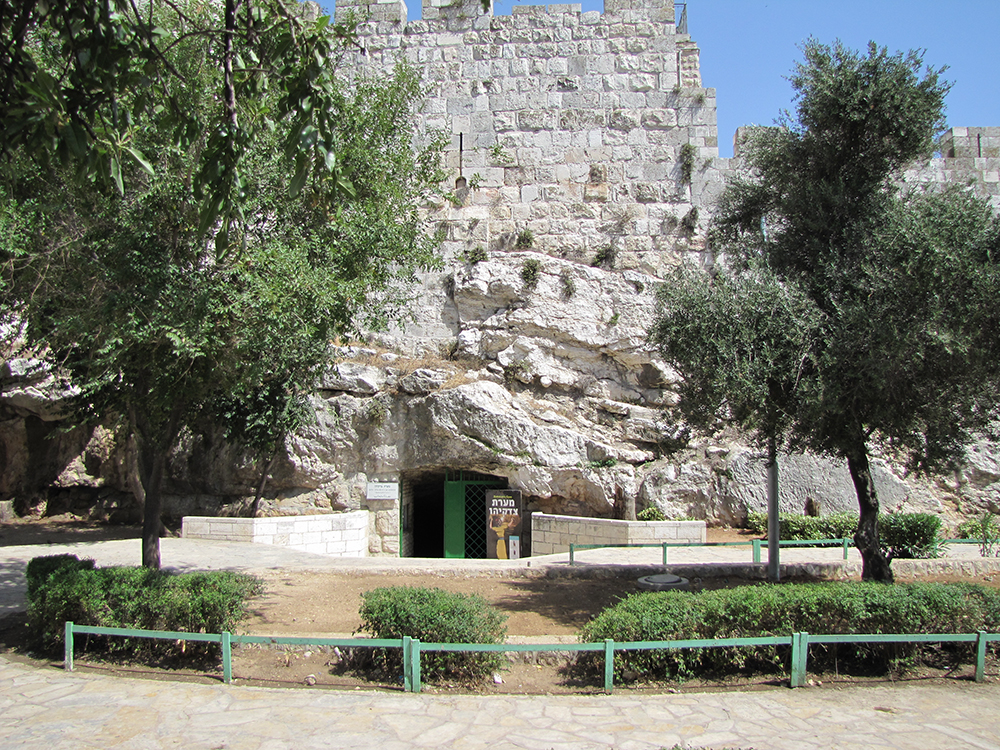
The entrance to Solomon’s Quarries built by Suleiman in 1535 is under the north wall of the Old City, and sits on the rock escarpment of Mount Moriah. Solomon’s Quarries are also known as Zedekiah’s Cave or Zedekiah’s Grotto.
The stones for Solomon’s temple may have been hewn and taken from this quarry around 970 BC (1 Kings 6:1):
Solomon had seventy thousand carriers and eighty thousand stonecutters in the hills, as well as thirty-three hundred foremen who supervised the project and directed the workmen. At the king’s command they removed from the quarry large blocks of quality stone to provide a foundation of dressed stone for the temple. The craftsmen of Solomon and Hiram and the men of Gebal (Byblos) cut and prepared the timber and stone for the building of the temple. -1 Kings 5:15-18
It seems certain that King Herod returned here in 19 BC for some of the stone used to build his temple. Some of the stones in the Western Wall, for example, could easily have originated in this quarry.
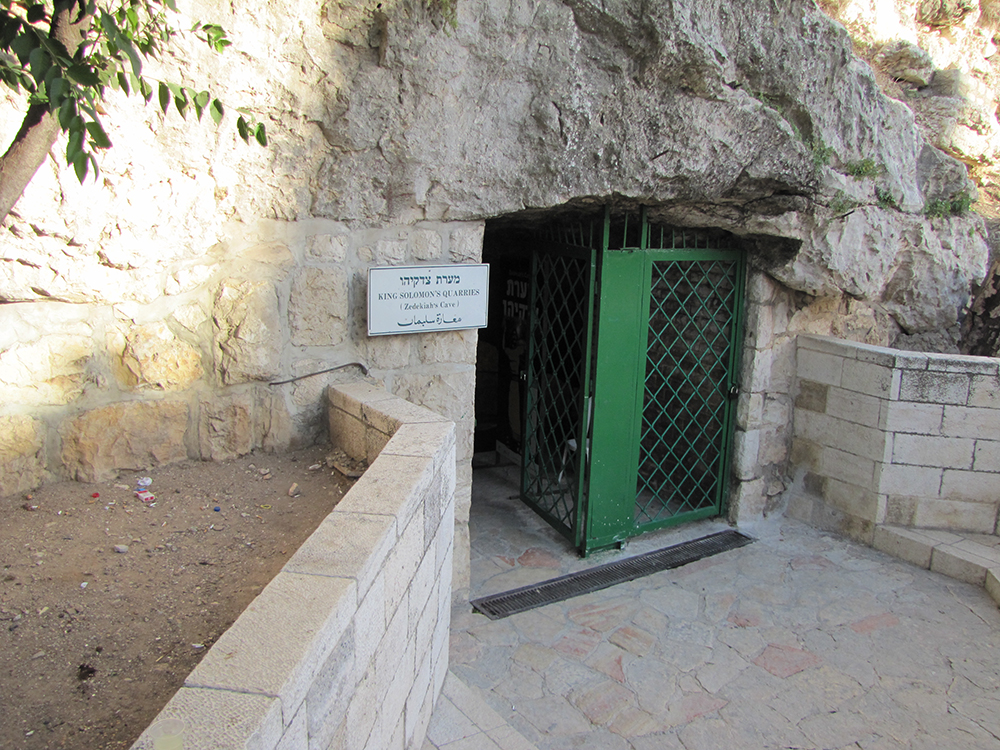
The entrance to Solomon's Quarries
The quarry entrance is under the north wall of the Old City about 500 feet to the east of the Damascus Gate. It was concealed during the Ottoman Empire by Suleiman in 1540 for security reasons and was not rediscovered until 1854 when James Barclay found it and snuck in one night. Josephus mentions the “Royal Caverns” (War 5:147) in his discussion of the north wall and gate built by Herod Agrippa I in 41BC on the same location as today’s wall and Damascus Gate. This quarry became known as Zedekiah’s Cave because 2 Kings 25 and Jeremiah 52 tell how Zedekiah fled the city of Jerusalem in 586 even though the Babylonian army had encircled the city for 24 months and had even entered to city to pillage and burn. How did Zedekiah escape entrapment in the city of Jerusalem at that time? The Bible indicates that he and his troops used a gate at night, but legend and the system of caves under the city provide additional information. There is reported a tunnel from the royal palace of David that was connected to the cave system under the Temple Mount on Mount Moriah, which would have been connected to this quarry. In fact, many ancient accounts and even modern reports claim that this cave system extends all the way to Jericho 13 miles away.
Then the city wall was broken through, and the whole army fled. They left the city at night through the gate between the two walls near the king’s garden, though the Babylonians were surrounding the city. They fled toward the Arabah (Jordan Valley), but the Babylonian army pursued King Zedekiah and overtook him in the plains of Jericho. All his soldiers were separated from him and scattered, and he was captured. - Jeremiah 52:7-9 (2 Kings 25:4-6)
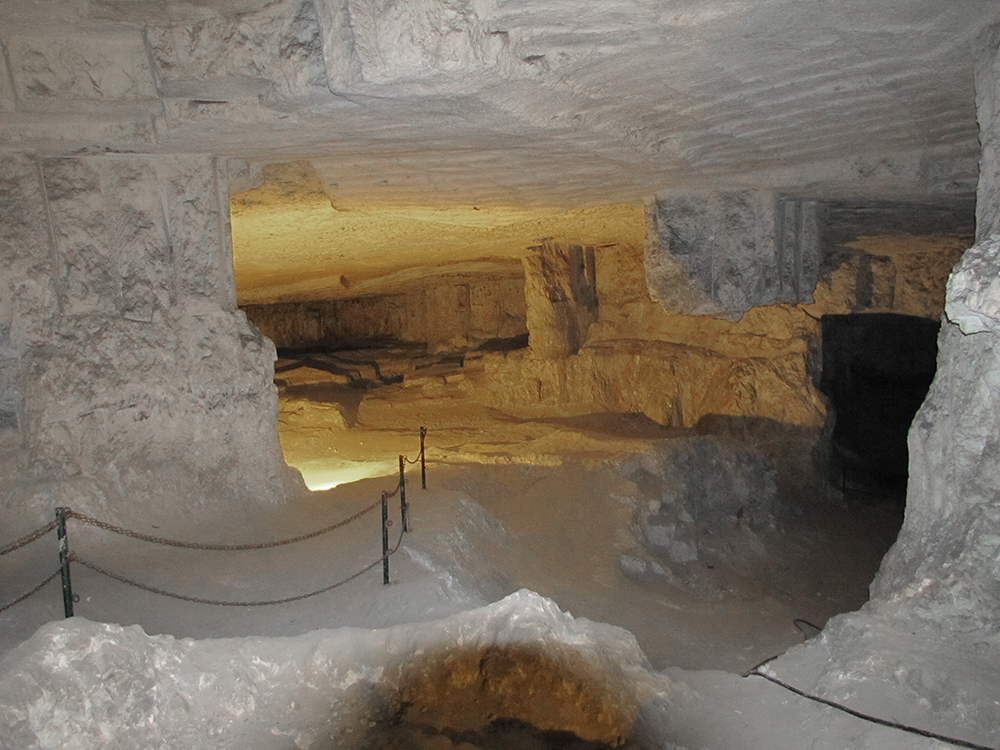
The stone ashlars were taken from this quarry. The straight cuts and grooves of the square blocks that were removed can still be seen.
This quarry is located under Mount Moriah. The area open for visitors today is just north of the Temple Mount about 30 feet beneath the Muslim Quarter in the Old City. There is a system of tunnels and caves used by the Jewish priests of the Old and New Testament to move about under the Temple Mount. The quarry is about 330 feet wide and 650 feet deep.
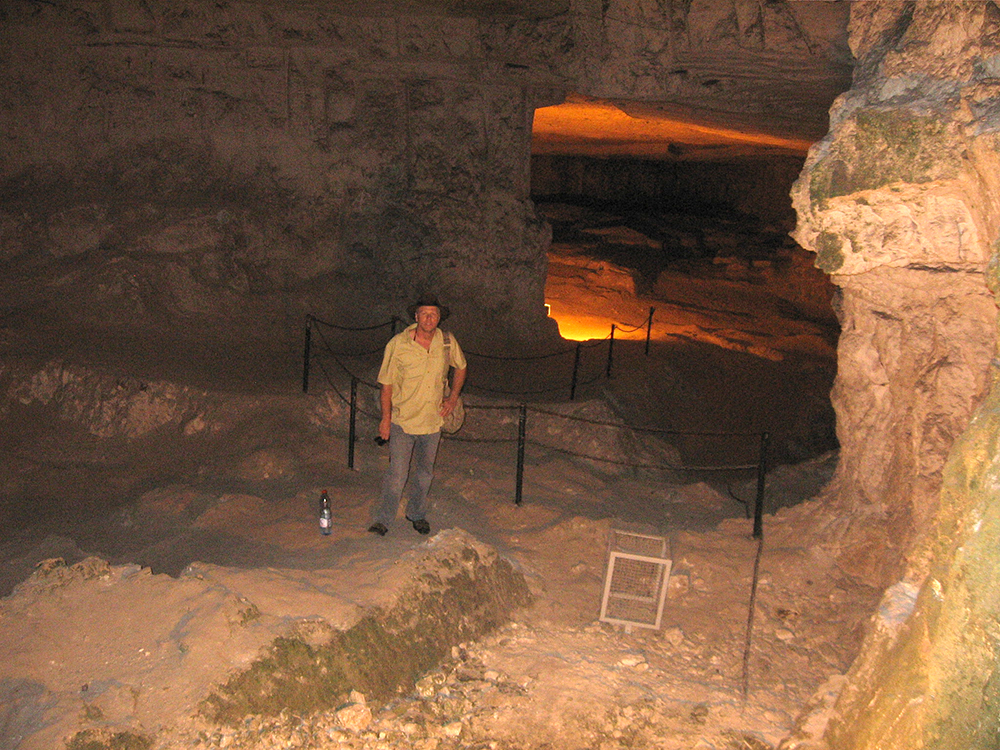
Galyn stands in Solomon’s Quarries where stones for the Temple were taken. This quarry leads to many tunnels that run under the Old City and the Temple Mount.
Some believe that in one of these secret tunnels lies the hidden Ark of the Covenant.
He (Josiah) said to the Levites, who instructed all Israel and who had been consecrated to the Lord: ‘Put the sacred ark in the temple (“beth” meaning “house”) that Solomon son of David king of Israel built. It is not to be carried about on your shoulders. 2 Chronicles 35:3
This verse is saying either:
- The Ark of the Covenant was moved out of the Most Holy Place located in the Temple to an undisclosed location during the evil days of Manasseh, and was being returned to the Temple in Josiah’s day.
- The Ark of the Covenant was moved here by King Josiah after he heard the prophecy from Huldah concerning the coming destruction of the Temple which was to occur after Josiah’s death.
If the Ark was being moved by Josiah to a place of hiding for protection, then it would have been taken to the “temple” or “house” (from the word “bet” or “beth” meaning “house”) that Solomon had made under the Temple. When Solomon built the Temple he would have prepared a hiding place deep inside Mount Moriah to protect the Ark in times of great rebellion or wickedness. God spoke to Solomon concerning a future time when the very Temple that Solomon had built would be destroyed and the people deported because of their sin:
If you turn away and forsake the decrees and commands I have given you and go off to serve other gods and worship them, then I will uproot Israel from my land, which I have given them, and will reject this temple I have consecrated for my Name. I will make it a byword and an object of ridicule among all peoples. And though this temple is now so imposing, all who pass by will be appalled and say, ‘Why has the Lord done such a thing to this land and to this temple?’
- 2 Chronicles 16:19-21
Solomon may have responded to this warning by preparing a place for the Ark to be placed in the days of Israel’s great apostasy. If this is true then the Ark was never seen by the Babylonians in 586 BC and would have remained hidden there even after the Jewish return from exile through the New Testament days up until today. This hiding place would have been accessible through Solomon’s Quarry, which provides access to a variety of tunnels and caves under the Temple Mount.
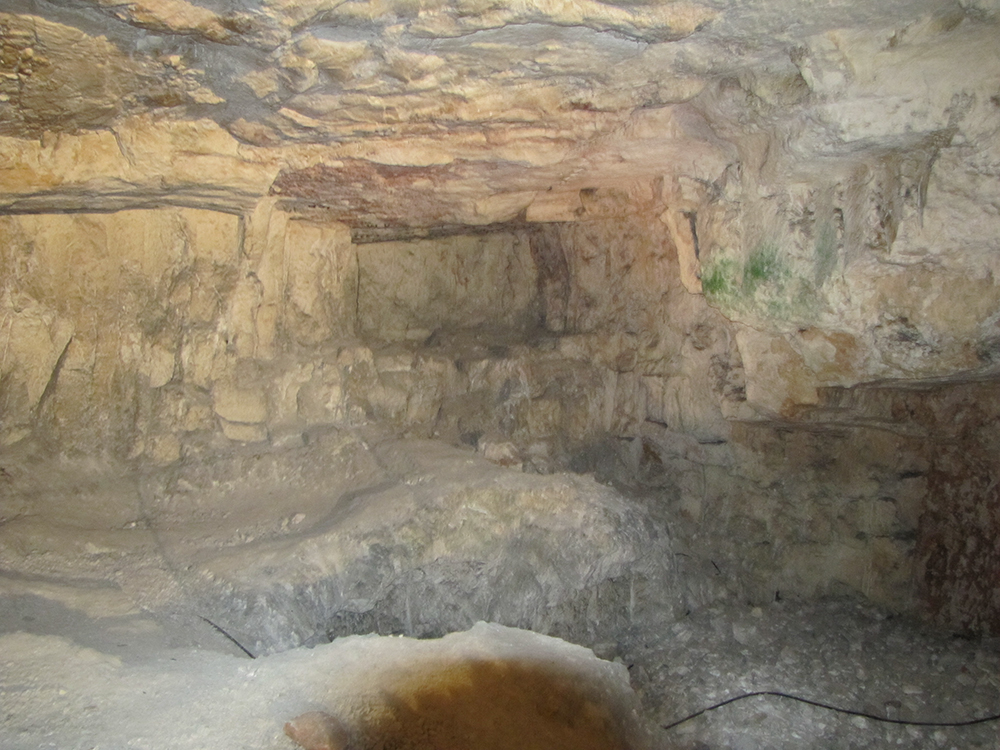
Chisel marks can be seen in the walls and ceilings, while chipped pieces remain in piles on the ground.
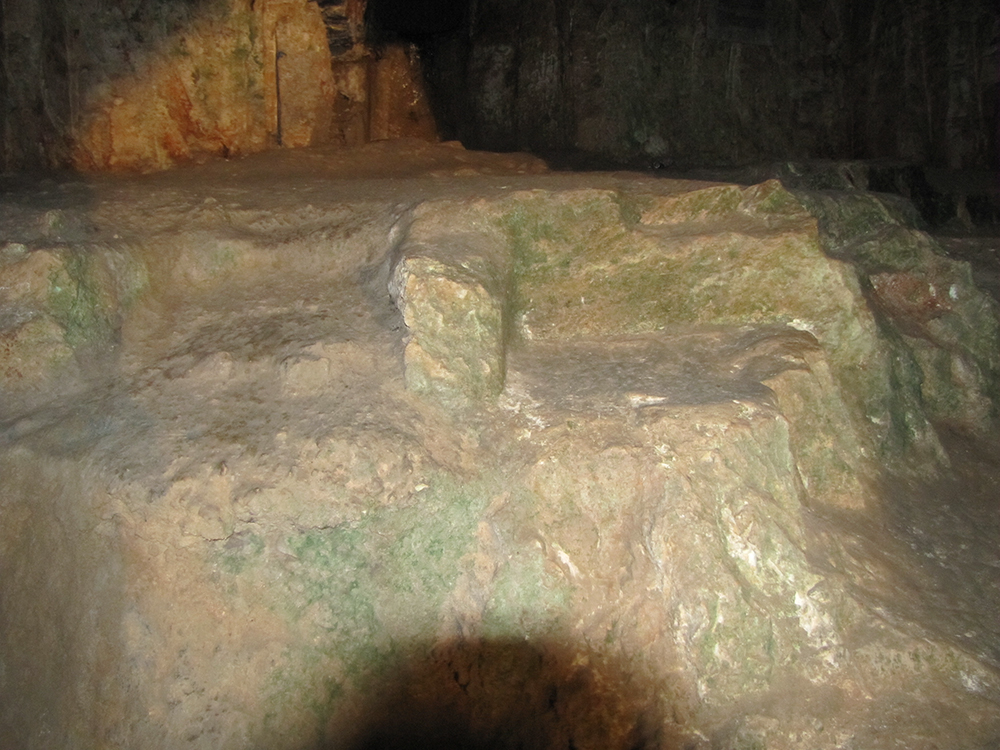
Bedrock in the quarry that has been left in place.
The hard white limestone, called malaky, used by Herod is visible throughout this quarry. A variety of other types of limestone can also be seen here.
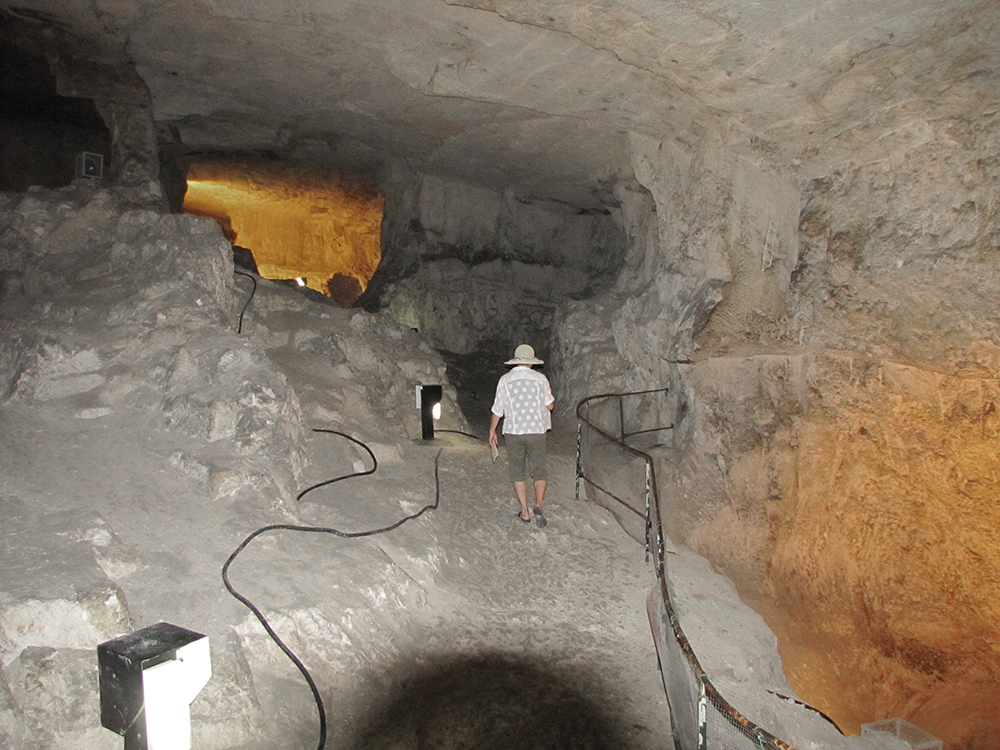
Toni walks deeper into the maze of caverns in the quarry that extends to a width of 330 feet.
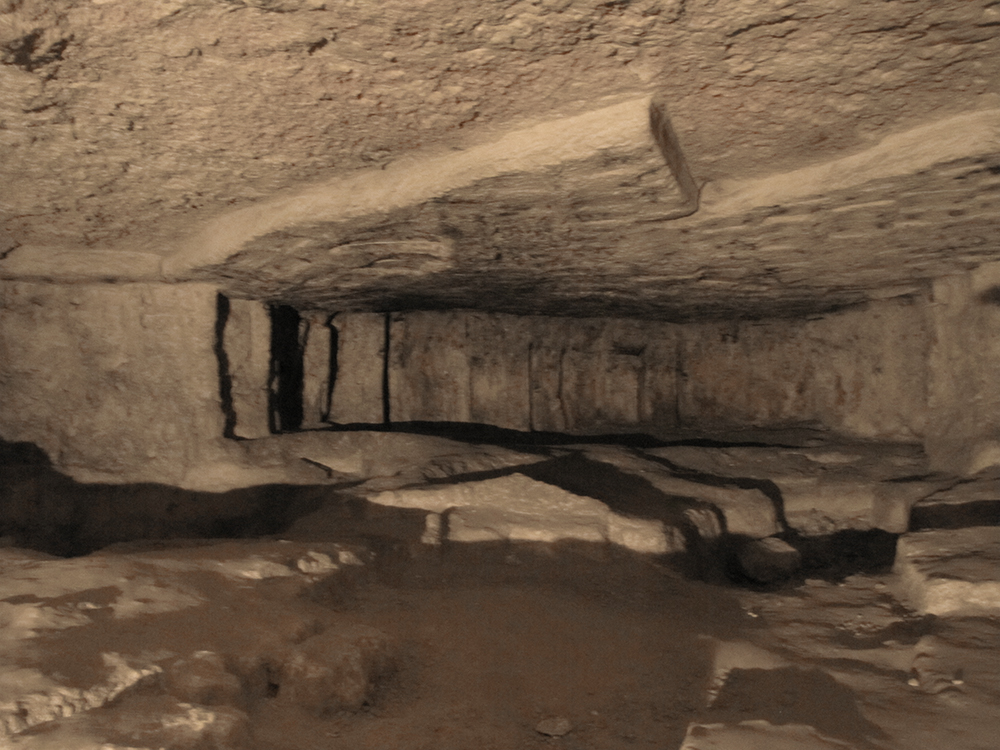
A section where the walls and ceiling show signs of the removed ashlars.
Chisel marks can be seen and piles of chipped rock remain. The location of removed ashlars is marked and even some finished blocks, ready to be removed, remain attached in the quarry.
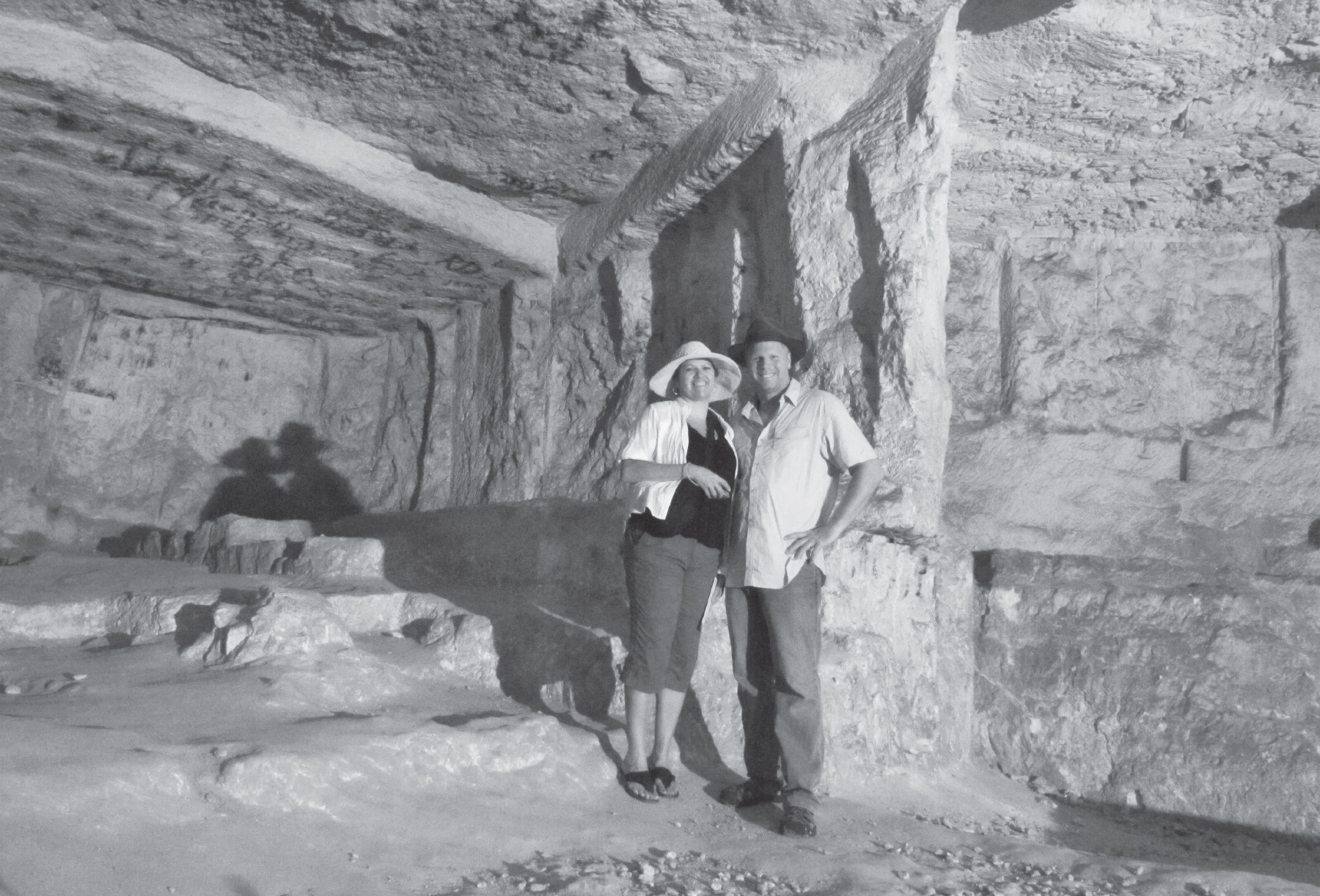
Galyn and Toni under Mount Moriah in Solomon's Quarries.
Notice the square cuts and straight grooves left from the removal of ashlar stones used to build in the city of Jerusalem above.